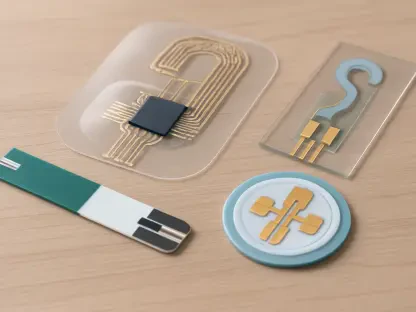Technology is leaving its indelible mark on elder care. With traditional systems grappling with infrastructural deficiencies, insufficiently trained personnel, and restricted healthcare access, digital solutions are stepping in to redefine care for older adults. Robotics, telemedicine, voice-assisted technologies, and generative artificial intelligence present groundbreaking opportunities to improve care quality and inclusivity, ensuring a dignified life for the aging population. By integrating these advanced digital tools, elder care systems globally are being transformed amidst ongoing challenges.
Transformative Role of Technology in Elder Care
Bridging Healthcare Gaps with Technology
The increasing integration of technology in elder care has become crucial to bridging healthcare gaps that were previously insurmountable. One significant example is the application of telemedicine, which has enabled healthcare providers to reach older adults in remote and rural areas. This technology ensures that vulnerable populations receive timely medical attention and follow-up care, many of whom previously had limited or no access to essential health services. This expansion facilitates continuous monitoring and communication between healthcare providers and patients, significantly improving the quality of care.
Moreover, voice-assisted technologies allow older adults to maintain greater independence and autonomy. Devices equipped with voice recognition can help seniors perform daily activities, remind them to take medications, and even alert caregivers in emergencies. These technologies promote safety and security while reducing the sense of isolation often felt by elders living alone. The incorporation of generative artificial intelligence further personalizes care, enabling tailored health and wellness recommendations, which lead to better health outcomes.
Active Participation of Older Adults in the Digital Economy
For a tech-driven healthcare system to be truly inclusive, older adults must be actively involved in the digital economy. Engaging seniors with training programs in digital literacy ensures that they can harness the full benefits of technological advancements. Comprehensive training initiatives bridge the digital divide and empower the elderly to understand and use digital tools effectively. With the acquisition of digital skills, they can access telemedicine services, manage personal health records, and communicate with healthcare providers without intermediary assistance.
Moreover, studies have shown that digital engagement can significantly enhance mental well-being among older populations. By actively participating in the digital economy, seniors can stay connected to their communities and families, access information, and engage in intellectually stimulating activities, all of which contribute to a better quality of life. Policymakers and organizations must prioritize digital education and support programs tailored to older adults, creating a more inclusive digital landscape.
Regional Insights and Adaptability in Digital Healthcare
Case Studies Demonstrating Real-World Applications
The practical application of digital healthcare solutions is exemplified through regional case studies from countries such as Singapore, Hong Kong, China, and Sri Lanka. Each of these regions has demonstrated the ability to tailor digital transformations to meet specific local needs. For instance, Singapore’s Smart Nation initiative focuses on creating a connected ecosystem where technologies are seamlessly integrated to support senior citizens. Eldercare robots in nursing homes and community centers assist with physical exercises, provide companionship, and monitor vital signs, showcasing the tangible impact of robotics on elder care.
Similarly, in rural China, telemedicine has been a game-changer, bringing expert medical consultations from urban centers to underserved areas. During the COVID-19 pandemic, telemedicine became an essential lifeline, allowing older adults to receive medical care while adhering to social distancing guidelines. Additionally, Hong Kong’s polyclinics have incorporated AI-driven diagnostic tools to assist physicians, ensuring accurate and timely medical consultations for older adults. These examples highlight the adaptability and necessity of digital healthcare, particularly in regions facing infrastructural constraints.
Overcoming Barriers to Digital Adoption
Despite the evident benefits, the adoption of digital healthcare solutions among older populations faces several hurdles. One prominent barrier is the lack of digital literacy, which can inhibit seniors from utilizing available technologies. Addressing this requires sustained effort in education and training, ensuring that older adults are equipped with the necessary skills to navigate digital platforms confidently. Government initiatives and collaborations with non-profit organizations can play a pivotal role in making digital literacy programs accessible and effective.
Another significant challenge is ensuring equitable access to technology. Affordability and accessibility issues must be addressed to ensure that digital advancements do not exacerbate existing disparities. Policymakers must consider subsidized programs and infrastructure improvements to provide widespread access to necessary technologies for elder care. Investing in reliable internet connectivity, affordable devices, and user-friendly platforms can significantly enhance the adoption rates and effectiveness of digital healthcare solutions.
Future Innovations and Policy Recommendations
Continuous Evolution and Adapting to New Challenges
The future of elder care lies in the continuous evolution of digital technologies and their adaptation to emerging challenges. Innovations in AI, machine learning, and wearable health devices promise to further revolutionize this domain. Wearable devices, integrated with AI, can offer real-time health monitoring, early detection of potential health issues, and automated emergency alerts. These advancements not only enhance the responsiveness of healthcare systems but also offer peace of mind to both the elderly and their caregivers.
Empirical research plays a critical role in understanding the subjective and objective well-being outcomes associated with the use of these technologies. By analyzing data, practitioners can refine and develop more sophisticated and effective digital health tools. Furthermore, fostering innovation through partnerships between technology companies, healthcare providers, and research institutions will be vital to driving progress in elder care.
Creating Inclusive and Efficient Care Systems
Technology is making a significant impact on elder care. Traditional systems often face issues such as outdated infrastructure, lack of adequately trained personnel, and limited healthcare access. Digital solutions are stepping up to address these challenges and revolutionize care for older adults. Innovations like robotics, telemedicine, voice-assisted technologies, and generative artificial intelligence offer groundbreaking opportunities to enhance the quality and inclusivity of elder care. These advancements ensure that the aging population can live with dignity. By integrating these advanced digital tools, elder care systems worldwide are undergoing significant transformations, even as they continue to confront various challenges. This revolution in elder care technology is not only improving the standard of care but also expanding its reach, making it more accessible and dependable for all older adults. The continued growth of these digital solutions is crucial for adapting to the increasing demands of an aging global population, ensuring they receive the comprehensive care they deserve.









